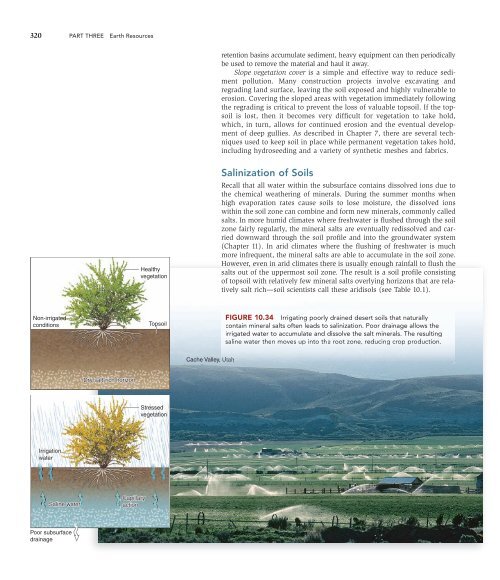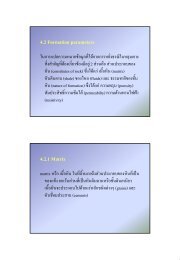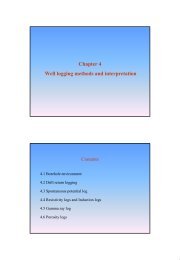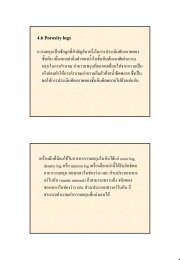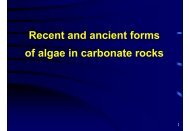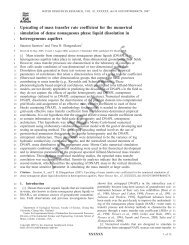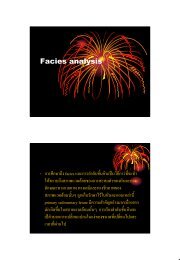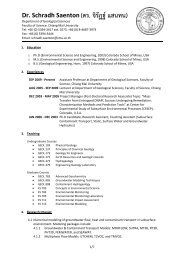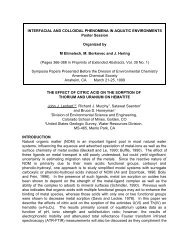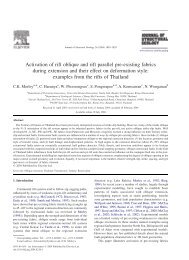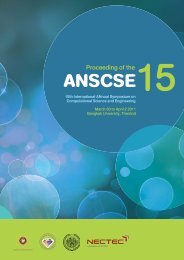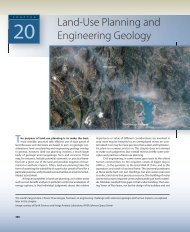Soil Resources - Geological Sciences, CMU
Soil Resources - Geological Sciences, CMU
Soil Resources - Geological Sciences, CMU
You also want an ePaper? Increase the reach of your titles
YUMPU automatically turns print PDFs into web optimized ePapers that Google loves.
320 PART THREE Earth <strong>Resources</strong>retention basins accumulate sediment, heavy equipment can then periodicallybe used to remove the material and haul it away.Slope vegetation cover is a simple and effective way to reduce sedimentpollution. Many construction projects involve excavating andregrading land surface, leaving the soil exposed and highly vulnerable toerosion. Covering the sloped areas with vegetation immediately followingthe regrading is critical to prevent the loss of valuable topsoil. If the topsoilis lost, then it becomes very difficult for vegetation to take hold,which, in turn, allows for continued erosion and the eventual developmentof deep gullies. As described in Chapter 7, there are several techniquesused to keep soil in place while permanent vegetation takes hold,including hydroseeding and a variety of synthetic meshes and fabrics.HealthyvegetationSalinization of <strong>Soil</strong>sRecall that all water within the subsurface contains dissolved ions due tothe chemical weathering of minerals. During the summer months whenhigh evaporation rates cause soils to lose moisture, the dissolved ionswithin the soil zone can combine and form new minerals, commonly calledsalts. In more humid climates where freshwater is flushed through the soilzone fairly regularly, the mineral salts are eventually redissolved and carrieddownward through the soil profile and into the groundwater system(Chapter 11). In arid climates where the flushing of freshwater is muchmore infrequent, the mineral salts are able to accumulate in the soil zone.However, even in arid climates there is usually enough rainfall to flush thesalts out of the uppermost soil zone. The result is a soil profile consistingof topsoil with relatively few mineral salts overlying horizons that are relativelysalt rich—soil scientists call these aridisols (see Table 10.1).Non-irrigatedconditionsTopsoilFIGURE 10.34 Irrigating poorly drained desert soils that naturallycontain mineral salts often leads to salinization. Poor drainage allows theirrigated water to accumulate and dissolve the salt minerals. The resultingsalinewaterthen moves up into the rootot zone, reducing cropproduction.Cache Valley, UtahDry salt-rich horizonStressedvegetationIrrigationwaterSaline waterCapillaryactionPoor subsurfacedrainage


